SSL is short for Secure Sockets Layer. It’s an encryption technology that keeps sensitive data between web servers and web browsers secure and private.
When you enable SSL, your website will use HTTPS instead of HTTP. You will also see a padlock sign next to your website address in the browser to show that the site runs on a secure connection.
The SSL protocol may also be called TLS or Transport Layer Security protocol. Both technologies use digital certificates to let users know that the website they are visiting is really what it says it is.
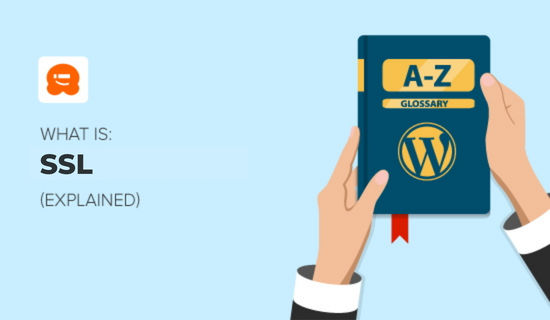
Should I Use an SSL Certificate on My Website?
Yes, using an SSL certificate on a website has become a standard internet security practice. With SSL, your site will run on an encrypted connection so that hackers cannot access any sensitive information, like credit card numbers and user login credentials.
Websites requiring personal data must have an active SSL certificate installed from a recognized Certificate Authority (CA). That includes WordPress users operating an eCommerce site, membership site, or any type of website that requires a user to either submit a payment or login information.
We recommend that all WordPress websites use SSL. It’s one of the best practices listed in our ultimate security guide.
If you run an online store, using SSL can also give users confidence when doing online transactions on your website. They can know that the website owner is legitimate and won’t do any type of scam like phishing.
Google Chrome and other web browsers show non-SSL websites as ‘Not Secure’. This means that if you are not using an SSL certificate on your website, then you can lose your customers’ trust.
This is why using SSL can boost your search engine rankings as Google prioritizes sites with good user experience.
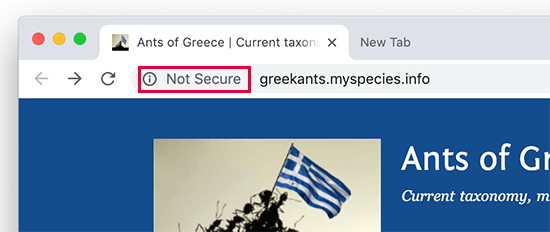
Sites that use SSL will display a padlock icon in the address bar.
Users can click on this icon to view the validation certificate, identification, and other information about a website.
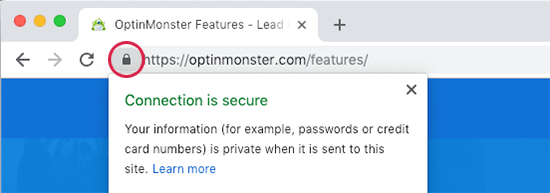
Video Tutorial
If you’d prefer written instructions, keep reading.
What Is the Difference Between SSL and TLS?
TLS, or Transport Layer Security, is the successor to SSL. It’s essentially the same thing but with some improvements for added security. TLS is now the most commonly used protocol for securing web traffic.
While both SSL and TLS are intended to provide secure connections, TLS is the more modern and secure option. However, even when a website is using TLS, people still refer to the process as SSL.
This is largely because the term SSL is more widely recognized among non-technical audiences. It’s similar to how people might refer to a smartphone as a cell phone, even though it’s technically outdated.
In practice, whether a website uses SSL or TLS, the end result is the same: a secure connection that protects data from being intercepted by unauthorized users.
What Is the Difference Between SSL and HTTPS?
SSL is the technology that enables secure communication. By contrast, HTTPS (Hypertext Transfer Protocol Secure) is the protocol that uses SSL/TLS to keep your web browsing secure. They are related but distinct concepts.
SSL is a cryptography protocol that provides security for data transmitted over the internet. It’s like a secret code that makes sure that information sent between your computer and a website stays private and safe from hackers.
HTTPS, on the other hand, is a protocol used for transferring data over the web. The ‘S’ at the end of HTTPS stands for ‘secure,’ indicating that the data transferred using this protocol is encrypted using SSL.
If a website uses SSL, then it will have the https:// protocol before its domain name.
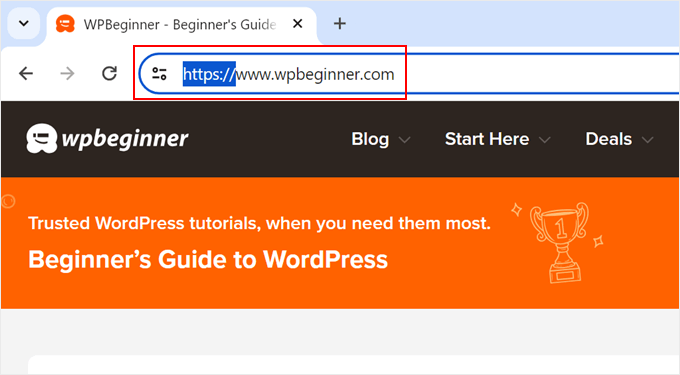
How Does SSL Work?
SSL protects user information by encrypting the data being exchanged between the web server and a visitor’s browser.
When visiting a website, your browser will automatically check for an SSL certificate to see if it is valid and up to date.
If a website’s certificate is correct, then the browser uses the website’s public key to encrypt the data. Then, the browser sends this encrypted data back to the website’s server. On the server side, the data is decrypted using the website’s private key.
This whole authentication process is known as the SSL handshake.
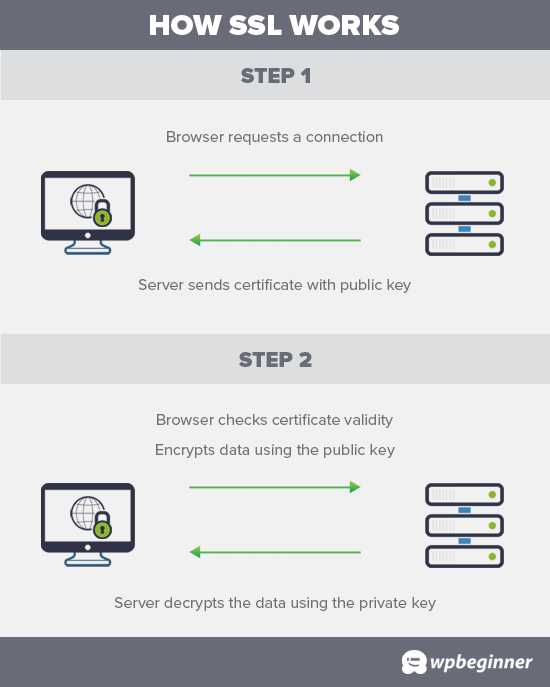
If the SSL/TLS certificate is not correct, then users will be warned that the connection is not private.
It is important that website owners fix this error as soon as possible so that they don’t lose traffic.
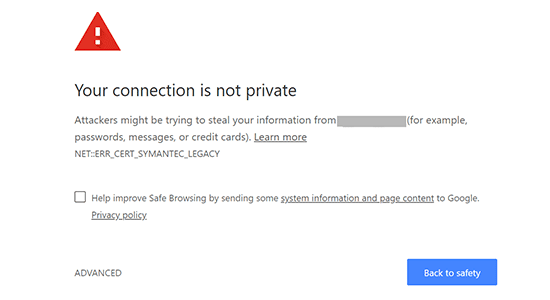
How to Get an SSL Certificate for Your Website
Most of the best WordPress hosting companies now offer their users free SSL certificates. If your hosting provider does not offer an SSL certificate, then we recommend using Domain.com to purchase an SSL certificate.
Domain.com is among the largest domain registration services in the world, and they offer the most affordable SSL prices. Their SSL certificates come with a $10,000 security warranty and a TrustLogo seal.
If you are just starting a blog or making a DIY business website, then you likely want to keep costs low. Luckily, there are multiple ways to get a free SSL certificate. You can learn how in our beginner’s guide on how to get a free SSL certificate for your WordPress website.
How Do I Install an SSL Certificate on WordPress?
Once you have purchased an SSL certificate, you will have to enable the certificate on your domain name. Then, you’ll need to set up your WordPress website to use SSL and HTTPS protocols. You’ll also need to let Google know you are now using SSL to avoid any SEO issues.
In our beginner’s guide on how to properly move WordPress from HTTP to HTTPS, we show you two methods to set up SSL on your website, including one that is easier for beginners. Alternatively, you can ask your hosting provider to install the SSL certificate for you.
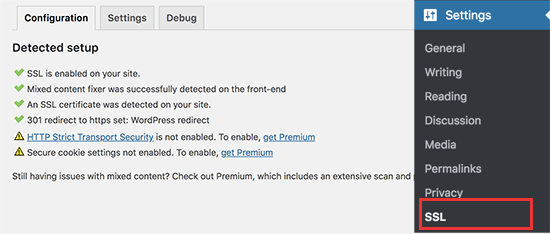
Moving a WordPress site to SSL can sometimes result in unexpected issues. If you’re adding SSL to an existing WordPress site and are running into errors, then check our guide on how to fix common SSL issues in WordPress.
We hope this article helped you learn more about SSL in WordPress. You may also want to see our Additional Reading list below for related articles on useful WordPress tips, tricks, and ideas.
If you liked this article, then please subscribe to our YouTube Channel for WordPress video tutorials. You can also find us on Twitter and Facebook.
Additional Reading
- How to Fix Common SSL Issues in WordPress (Beginner’s Guide)
- How to Get a Free SSL Certificate for Your WordPress Website (Beginner’s Guide)
- How to Fix Your Connection Is Not Private Error (8 Tips)
- How to Secure Your WordPress Pages With SSL (Step by Step)
- How to Properly Move WordPress from HTTP to HTTPS (Beginner’s Guide)




